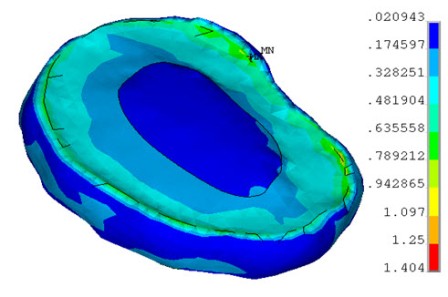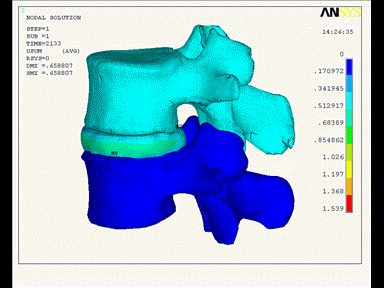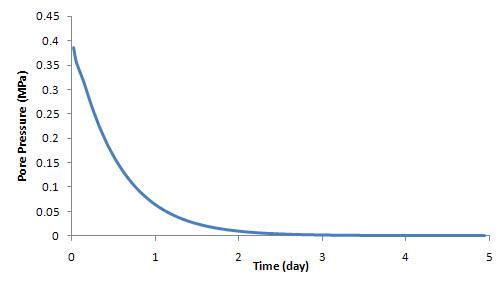The following figure show the bulging of the IVD, one of the primary deformation modes of an IVD under compression in clinical studies:
For IVD stresses, the annulus bulk takes more load than the nucleus since it has higher stiffness, as shown in this figure:
With the IVD modeled using coupled pore-pressure-thermal elements, vertical displacement gradually increases with time, as shown in this animation:
The animation also illustrates the difference between solid elements and coupled pore-pressure-thermal elements. With the same loading and boundary conditions, the upper vertebral body modeled with coupled pore-pressure-thermal elements drops gradually under compression, as compared to the constant displacement of solid elements. For soft-tissue modeling, coupled pore-pressure-thermal elements provide a more realistic simulation.
As vertical displacement increases with time, pore pressure dissipates:
The creep response of the lumbar motion segment is due to fluid flowing out of the IVD, as shown:
When the fluid is exhausted, the final displacement is equal to that of an IVD modeled by solid elements only:
The creep response under compression demonstrates the diffusive interaction between the solid matrix and the interstitial fluid in soft tissues.








